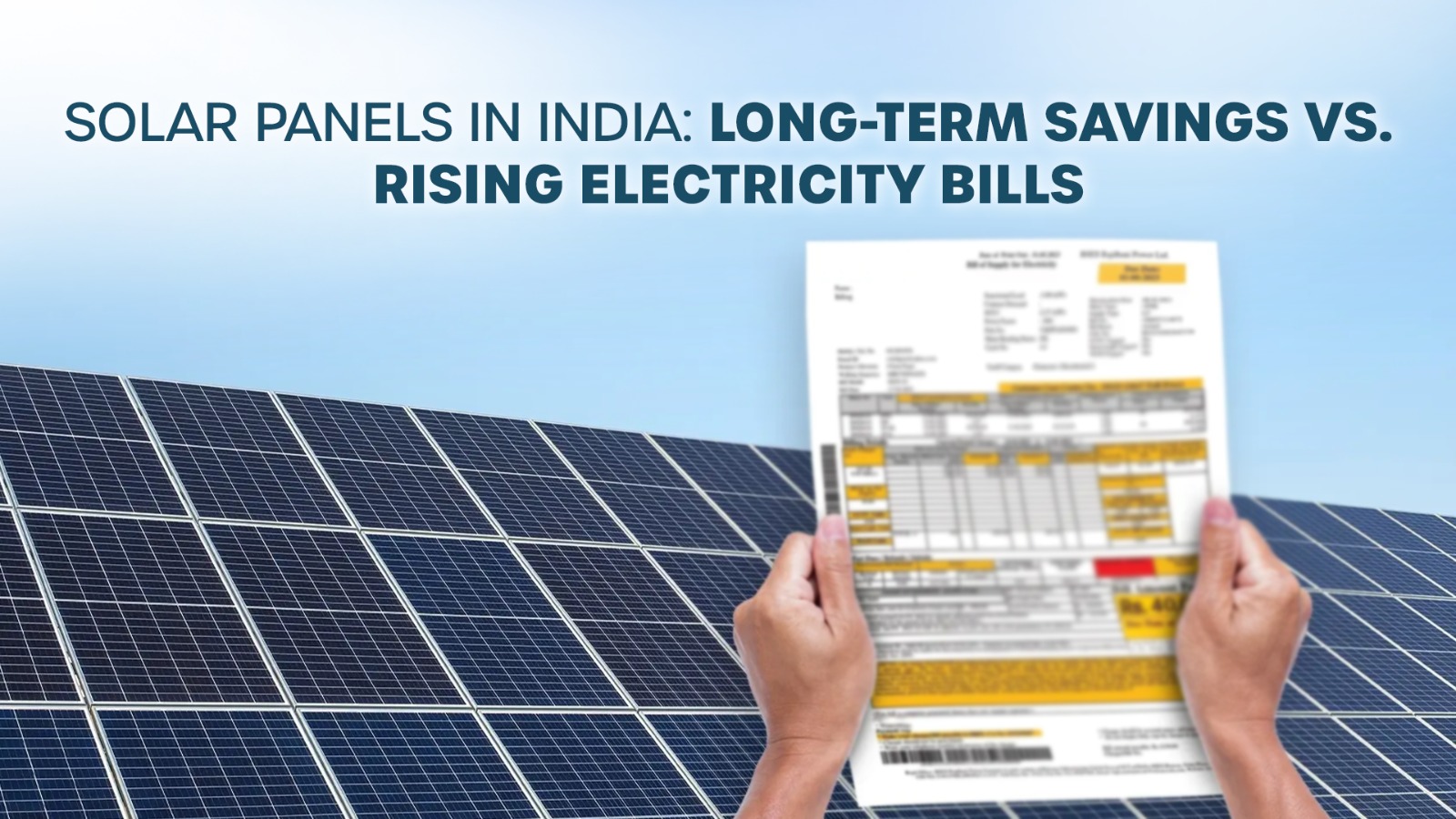Solar Panels in India: Long-Term Savings vs. Rising Electricity Bills
Electricity costs in India are rising year after year, especially for households, commercial establishments, and industries with high energy needs. At the same time, the cost of installing solar panels has steadily reduced due to technological advancements and government support. The big question is: Is investing in solar worth it compared to paying monthly electricity bills?
In this blog, we break down the true cost of solar panels, compare it with traditional electricity bills, and highlight why going solar is a smart financial and environmental decision for both homes and businesses.
The Rising Burden of Electricity Bills in India
For most families and businesses, electricity bills form a significant part of monthly expenses. With urban demand, air conditioning, and industrial equipment, consumption is increasing while tariffs continue to rise.
-
Domestic households in cities often face monthly bills between ₹2,000 – ₹6,000, depending on usage.
-
Small businesses and shops can pay upwards of ₹10,000 per month.
-
Industries and commercial facilities may face electricity bills in lakhs every month.
The bigger challenge? These bills are recurring — you pay them month after month, year after year, with no asset created in return.
Solar Panel Costs in India – An Investment, Not an Expense
Installing solar panels requires an upfront investment, but unlike electricity bills, this cost builds a long-term energy asset.
-
Residential rooftop systems: Approx. ₹60,000 – ₹90,000 per kW.
-
Commercial/industrial systems: Approx. ₹45,000 – ₹70,000 per kW (due to scale benefits).
-
Life of solar panels: 25 years (with very low maintenance).
💡 For a typical 5 kW rooftop solar system, the initial investment may be around ₹3–4.5 lakh, but it can offset electricity bills of ₹5,000–₹7,000 per month. This means the payback period is just 4–6 years, after which the electricity you generate is practically free.
Solar vs. Electricity Bills – A 25-Year Perspective
| Factor | Electricity Bills | Solar Panels |
|---|---|---|
| Cost | Continuous monthly expense (keeps rising) | One-time investment + minor maintenance |
| Duration | Pay forever | 25+ years of free power |
| Savings | None (money spent is gone) | Average savings of ₹40–₹50 lakh for a home/industry over 25 years |
| Energy Independence | Dependent on DISCOM rates | Self-generated, sustainable power |
| ROI | Zero | 15–25% annually (through savings) |
Beyond Cost – Other Benefits of Solar
-
Environmental Impact – Reduces carbon footprint, aligns with India’s renewable energy goals.
-
Property Value – Homes with solar installations have higher resale value.
-
Energy Security – Protection from frequent power tariff hikes.
-
Business Advantage – For industries, solar reduces operating costs and improves sustainability credentials.
H2: Is Solar Right for You?
If you are:
-
A homeowner tired of rising bills,
-
A business looking to reduce operating expenses, or
-
An industry aiming for long-term cost savings and compliance with sustainability goals —
then solar is a strategic investment, not just a utility upgrade.
Conclusion
When comparing solar panel costs vs. electricity bills in India, the verdict is clear: electricity bills are recurring expenses, while solar is a one-time investment that delivers decades of savings and energy security. But while the panel gets most of the attention, the solar mounting structure is just as important — it provides the strength, stability, and durability that ensures panels perform reliably for 25+ years.
At Rudran Infra Metals, we manufacture precision-engineered solar mounting structures that form the backbone of solar projects across India. From rooftop systems to utility-scale solar farms, our solutions ensure that every investment in solar panels is supported by a foundation built to last.
👉 The future of energy in India is solar. The sooner you switch, the faster you start saving.
